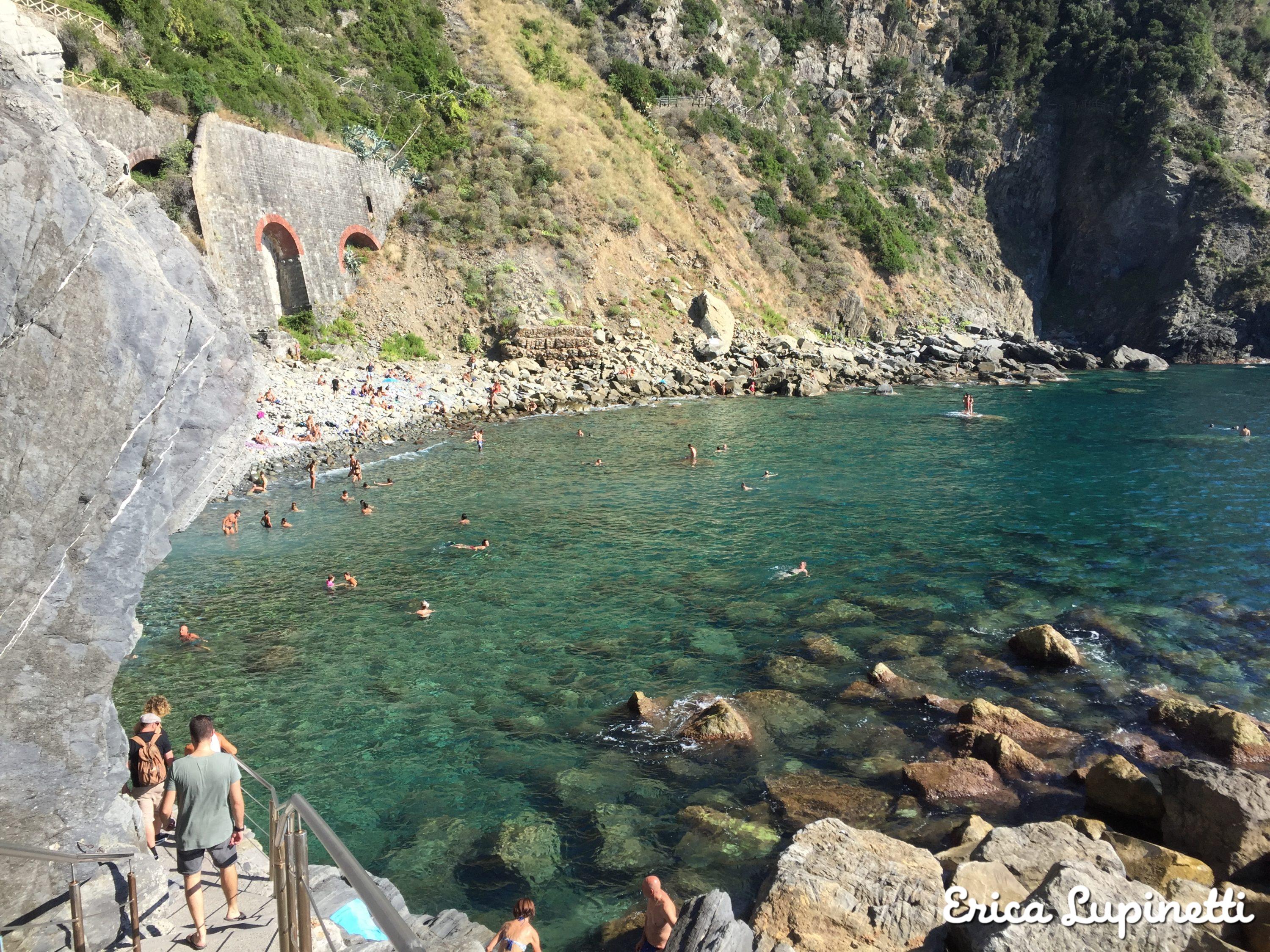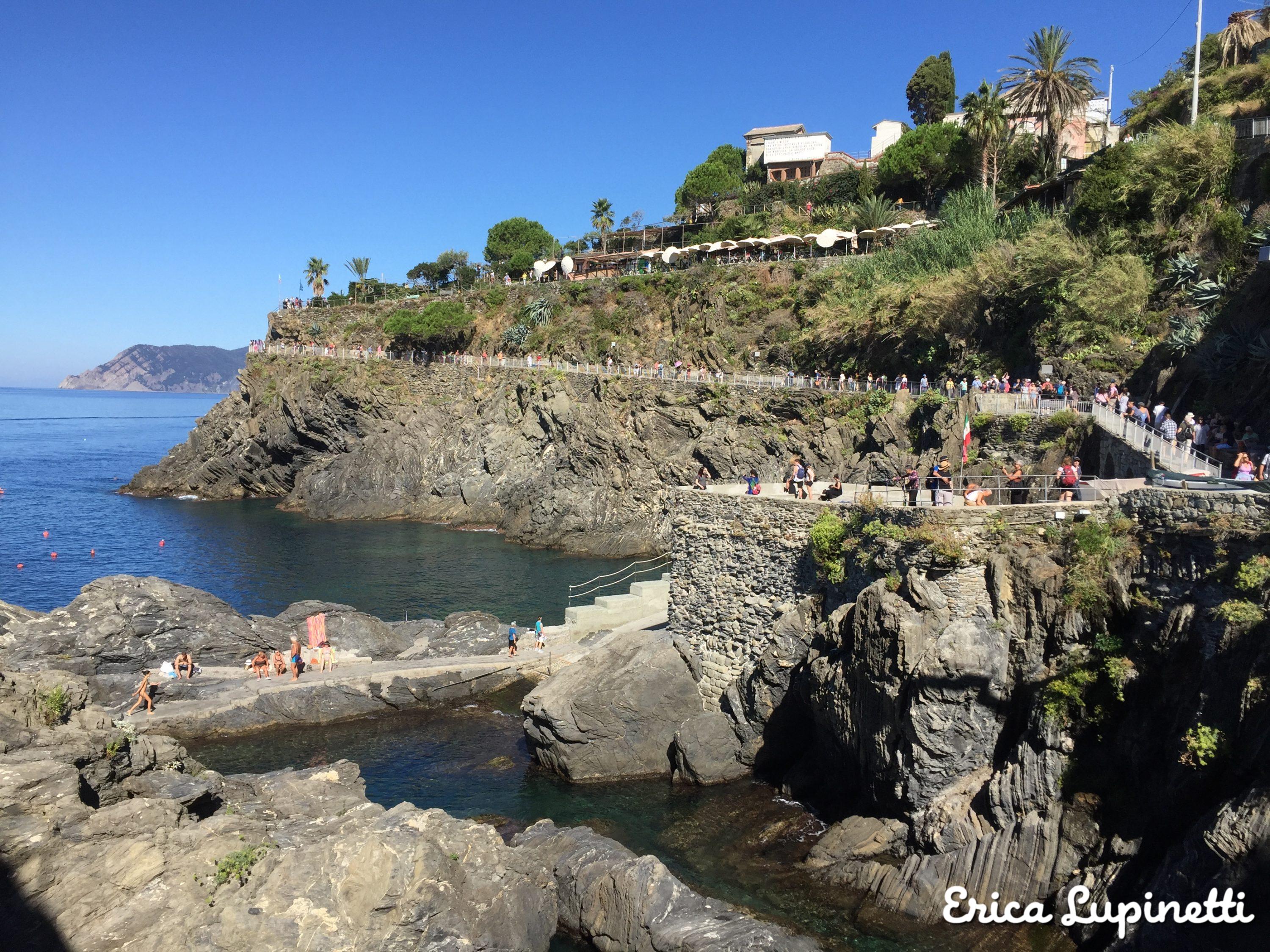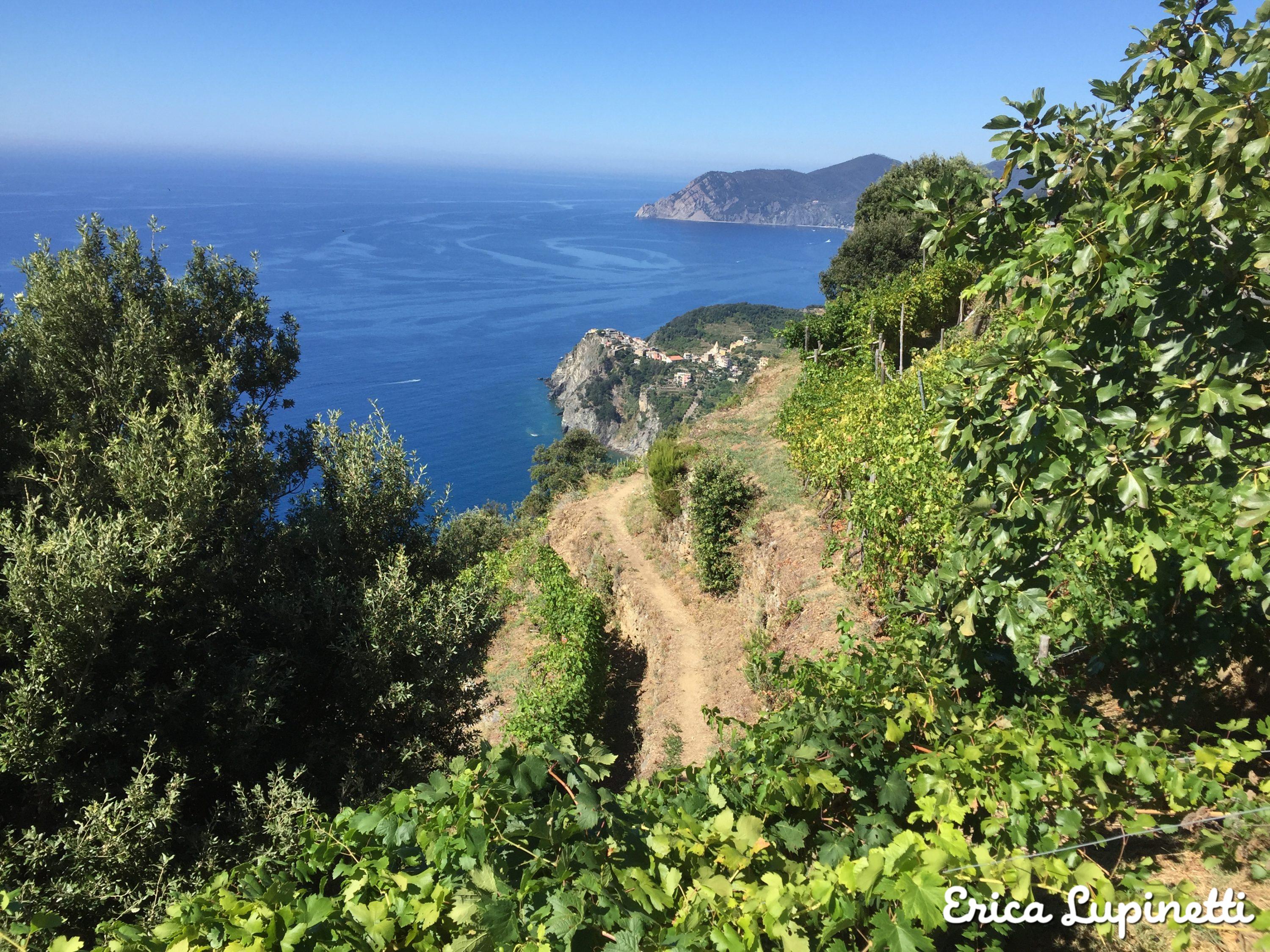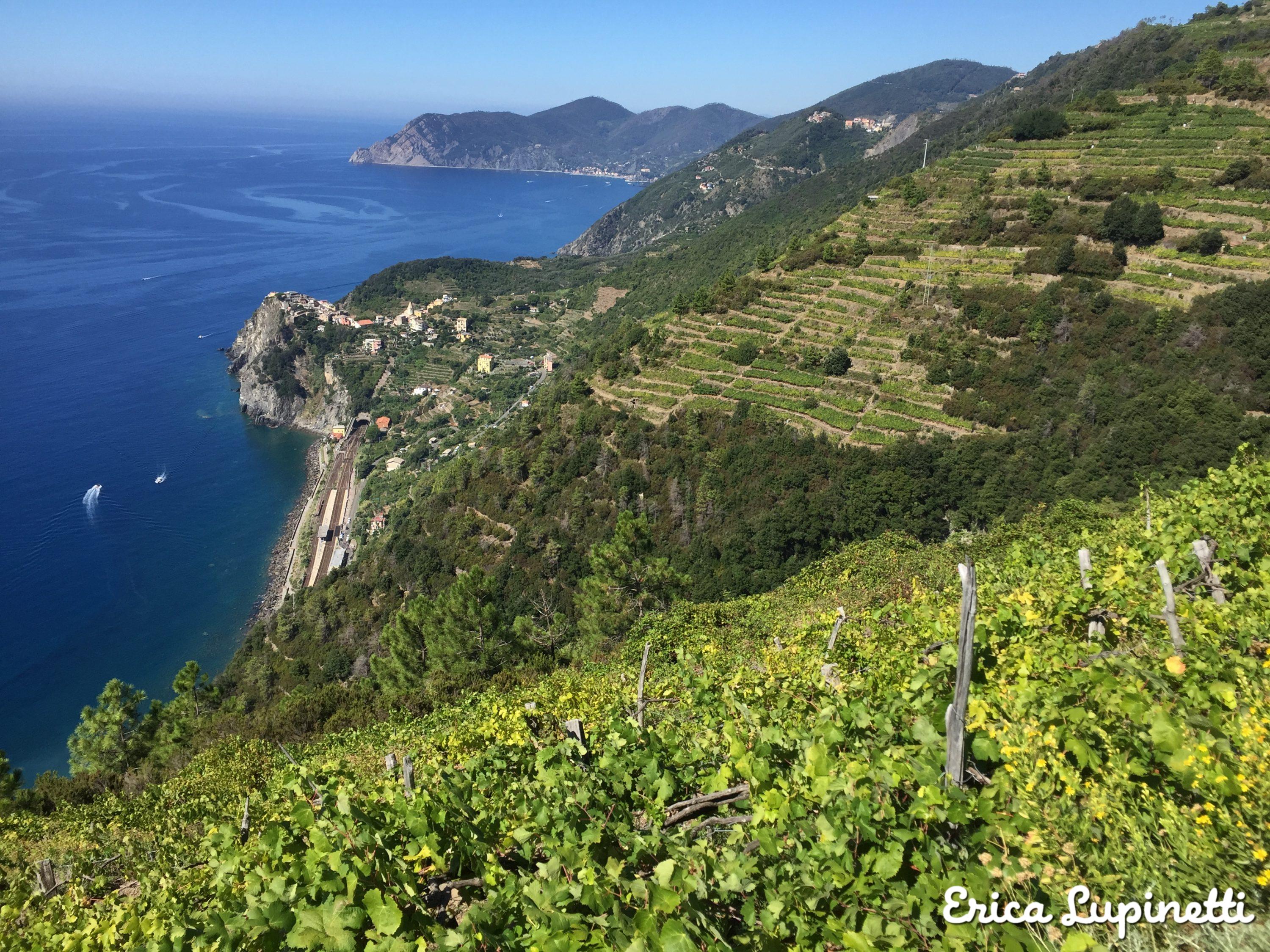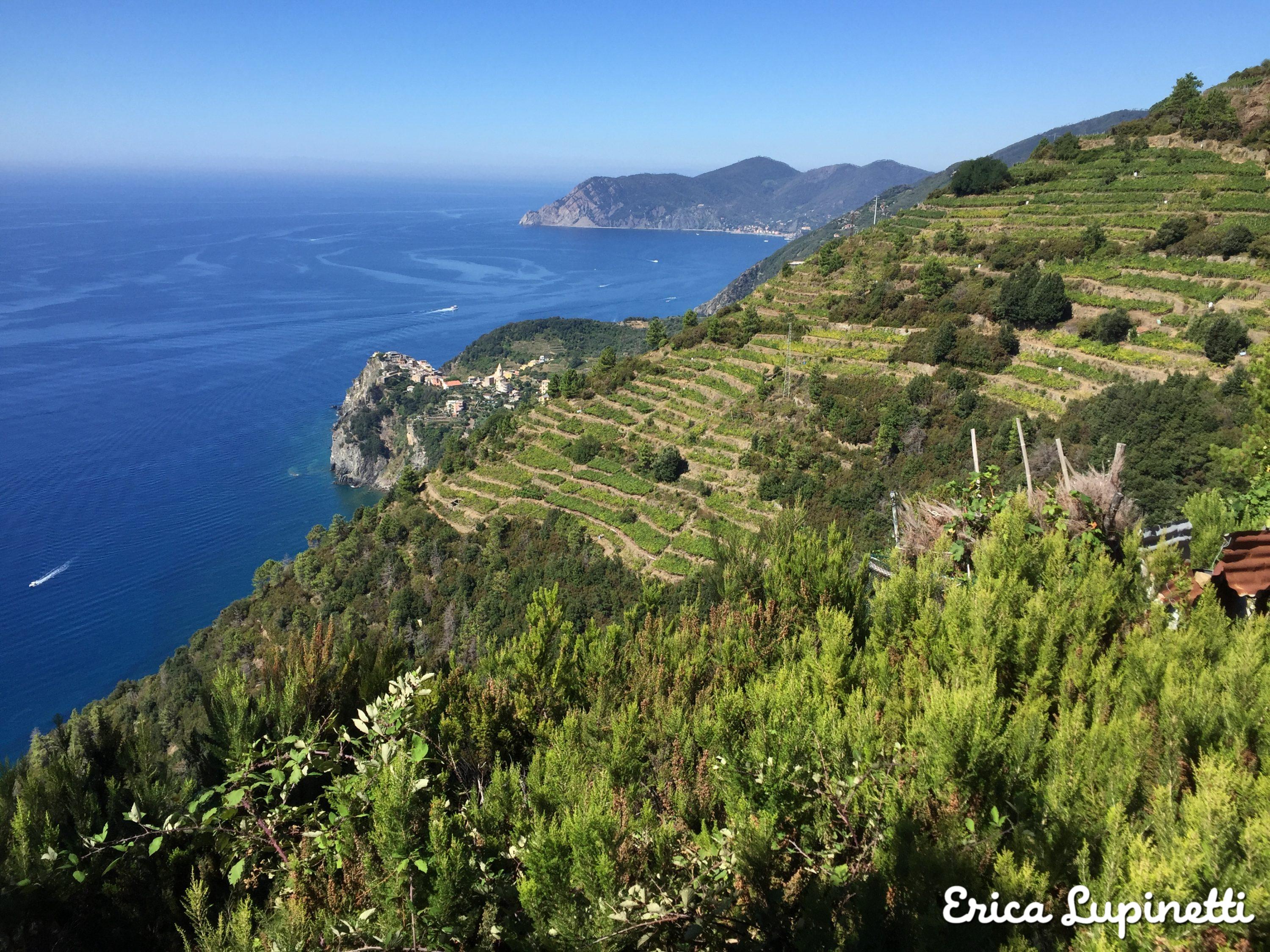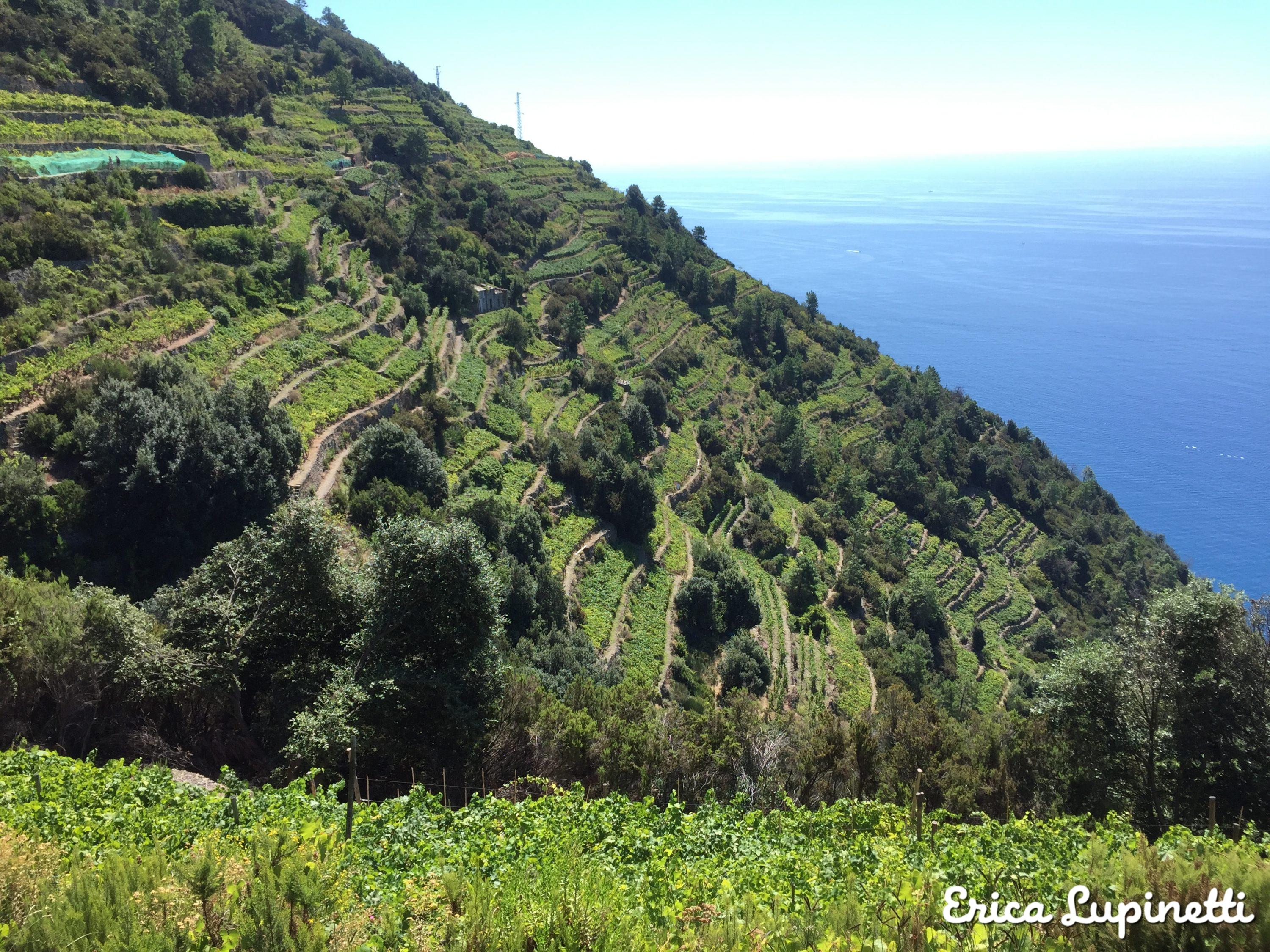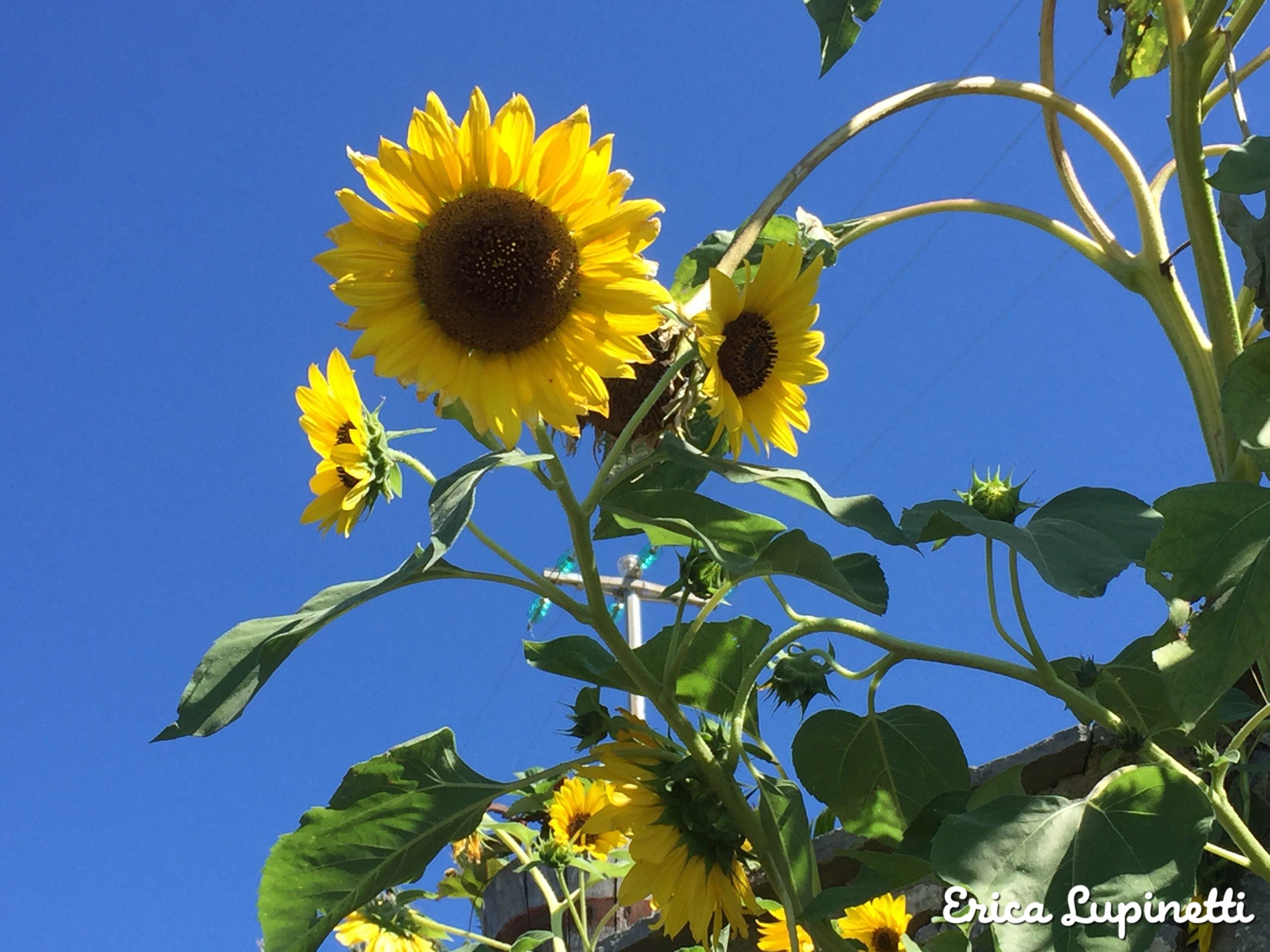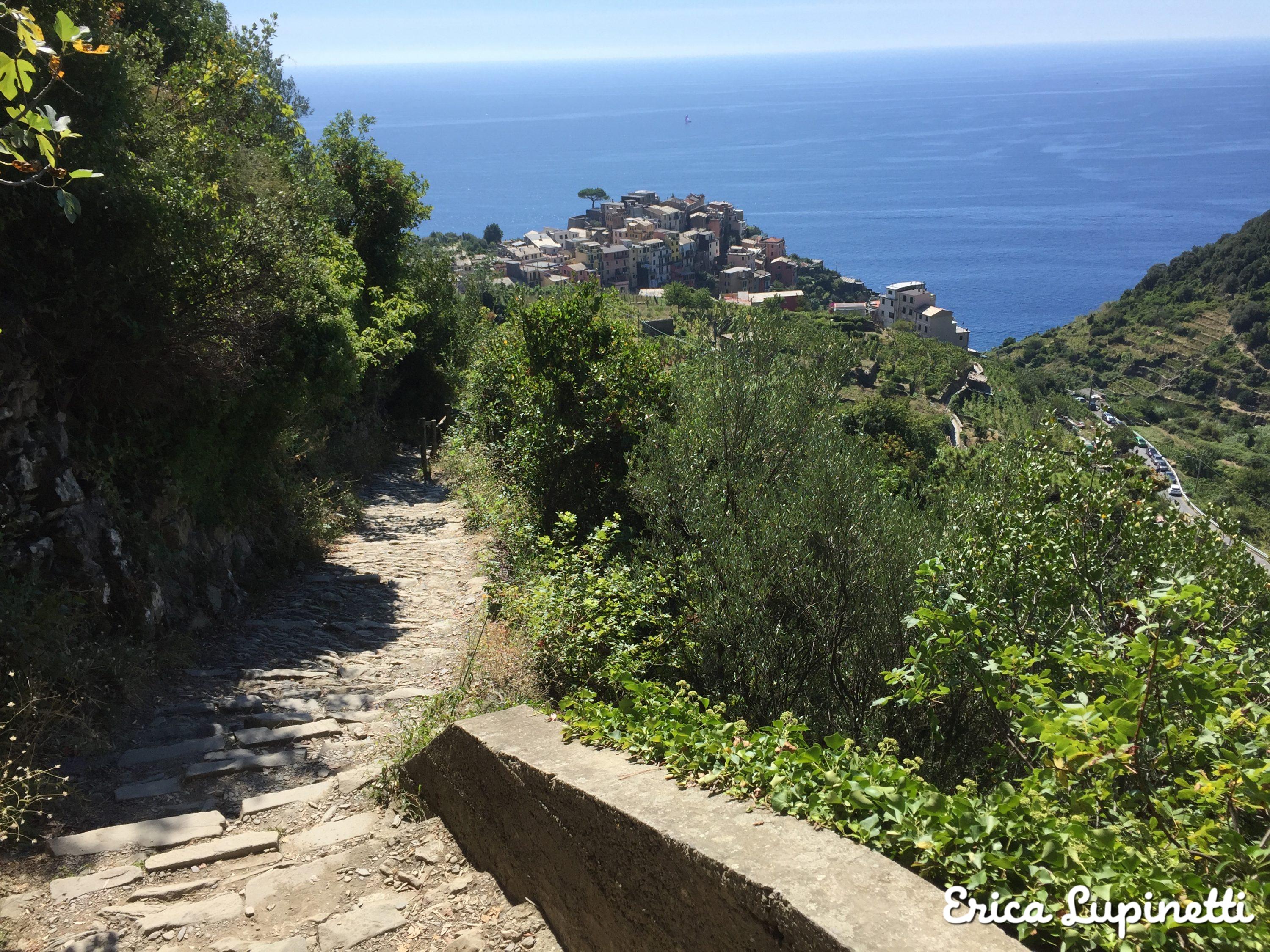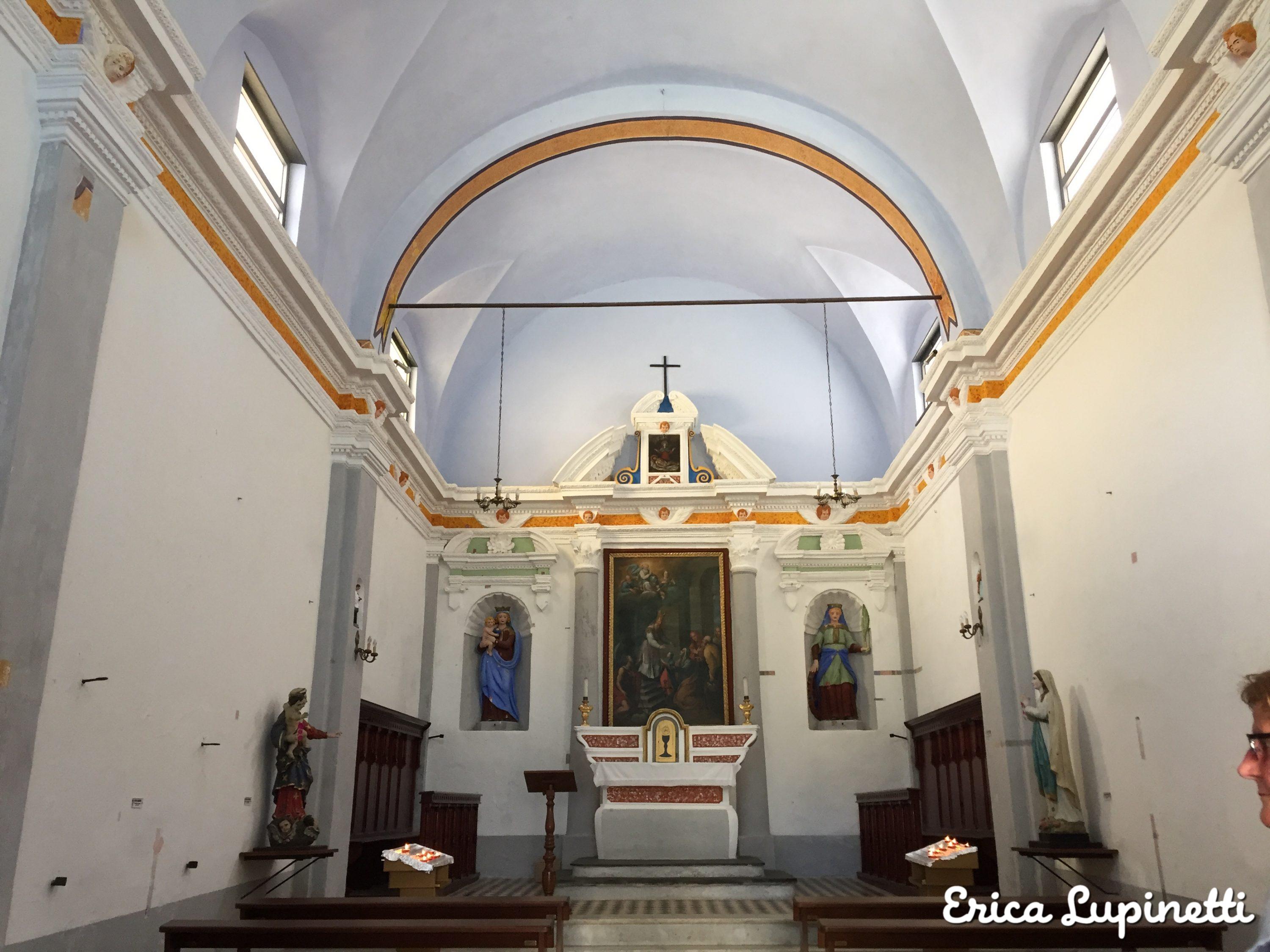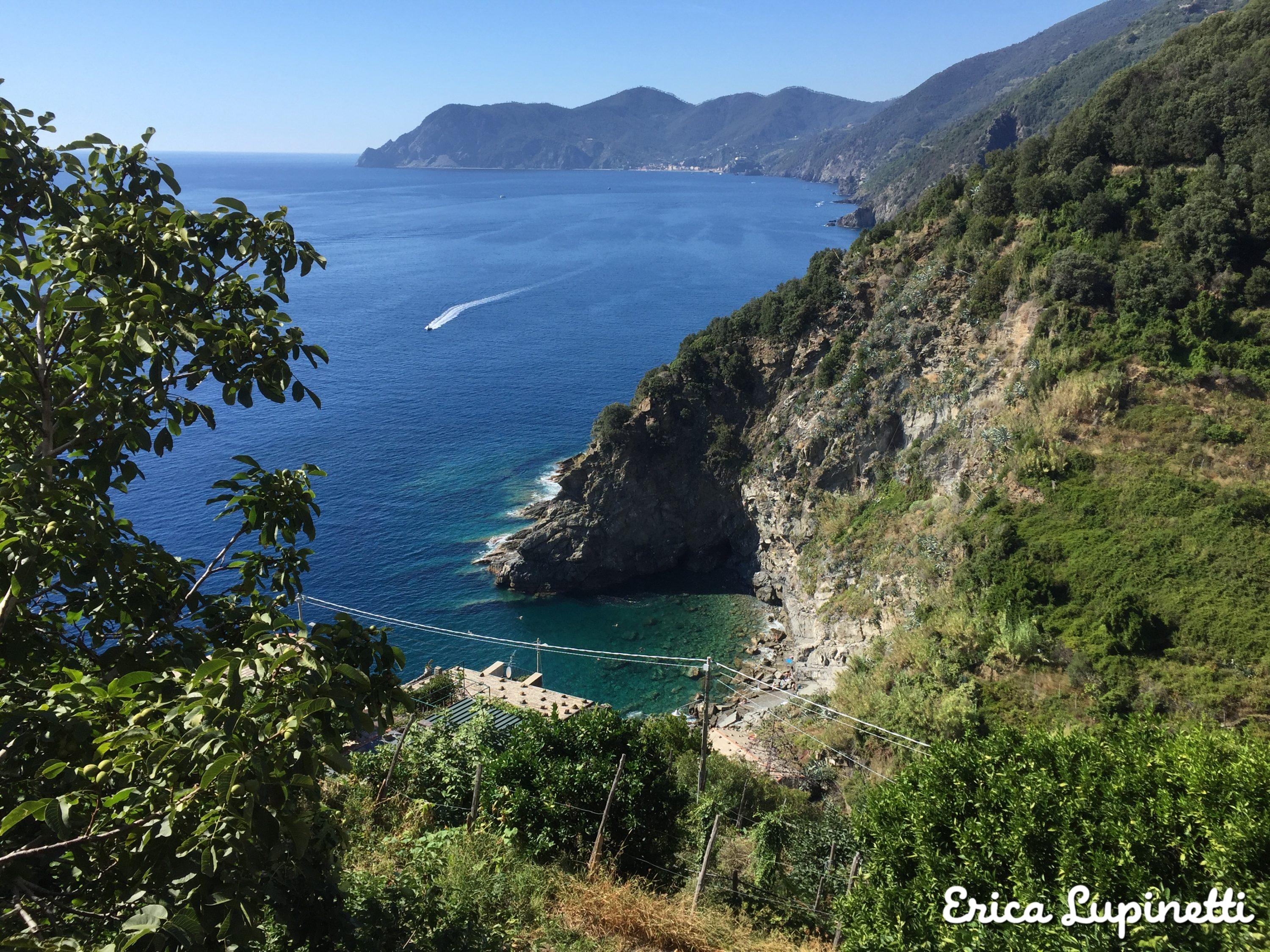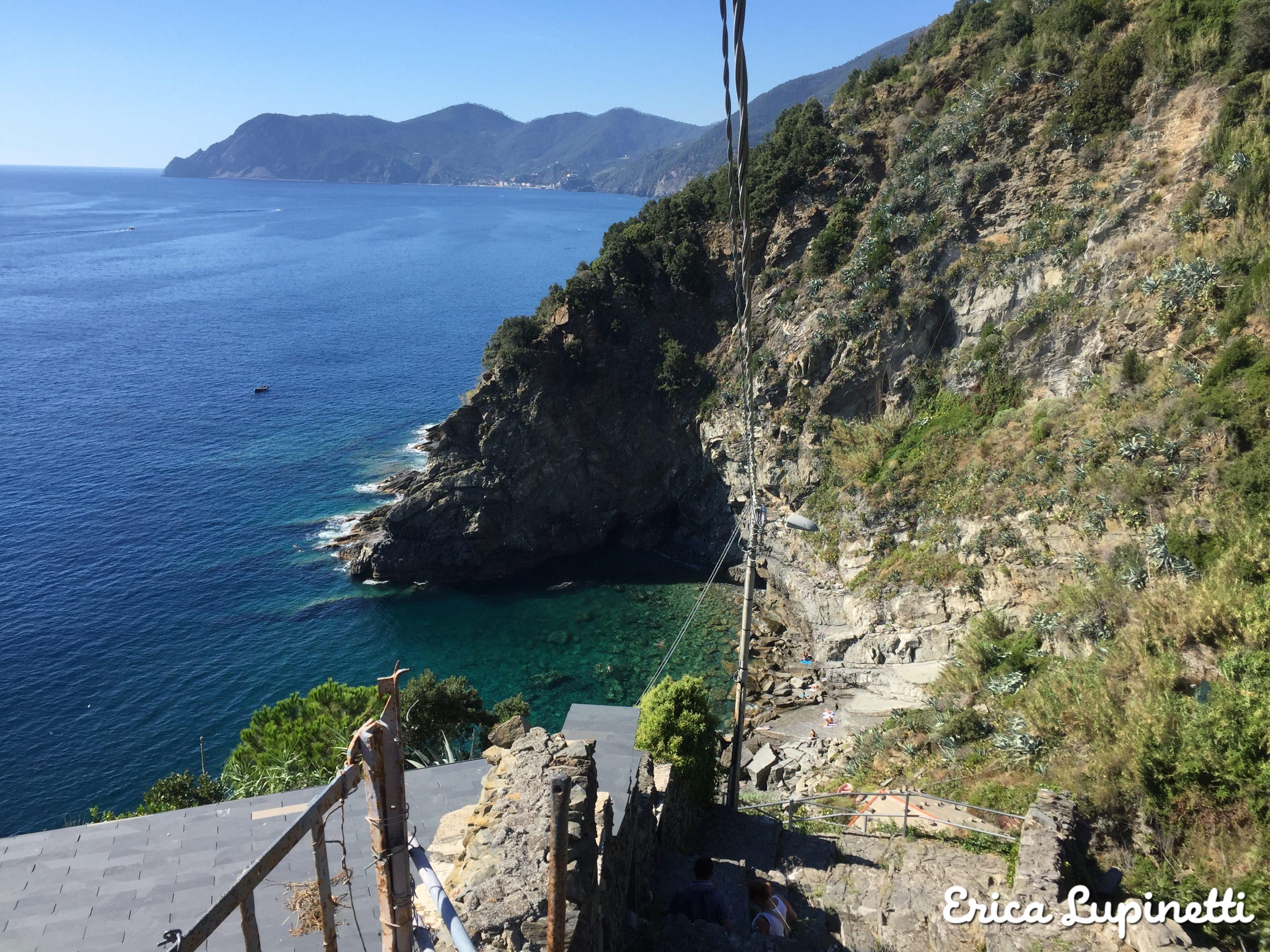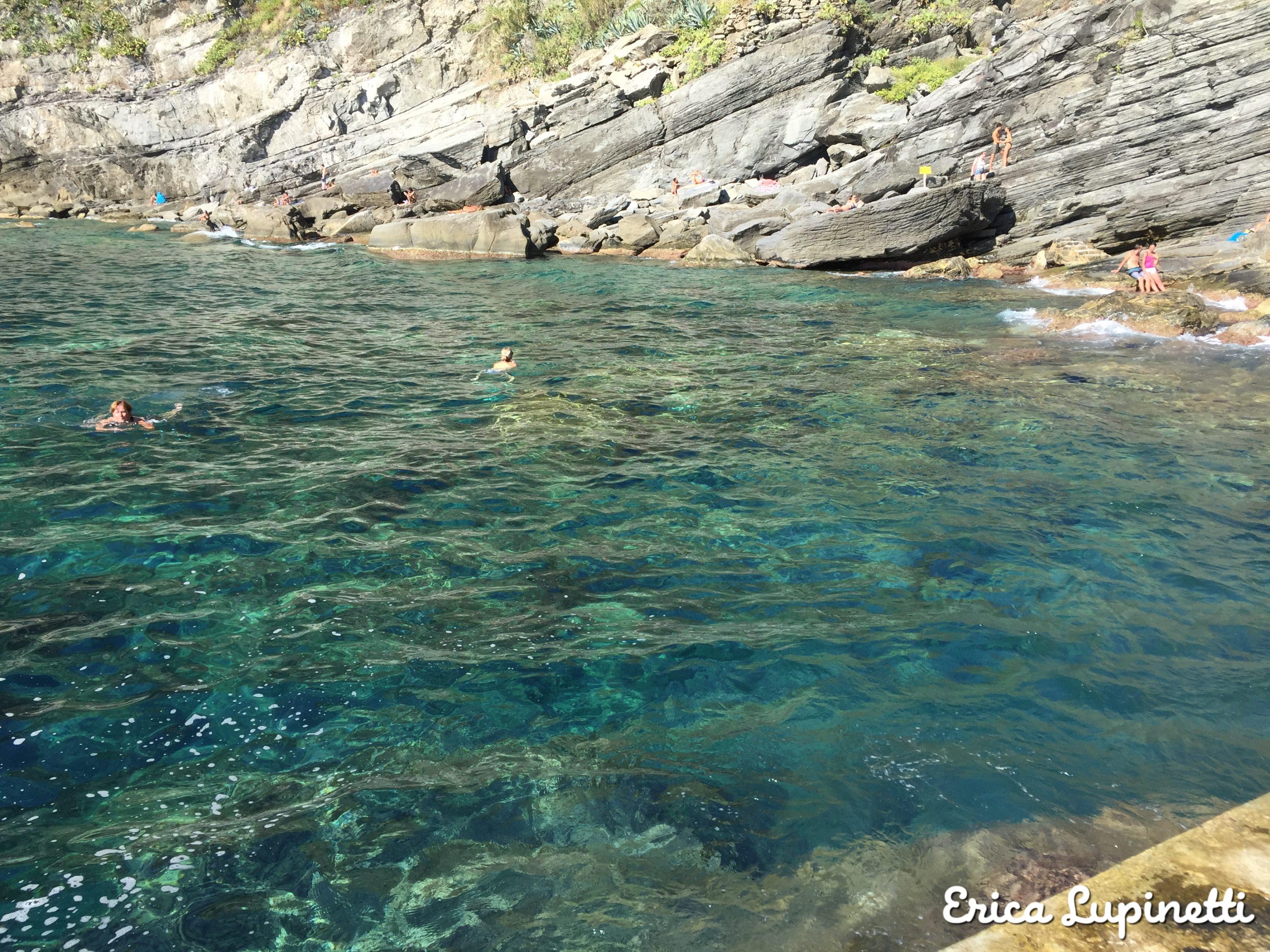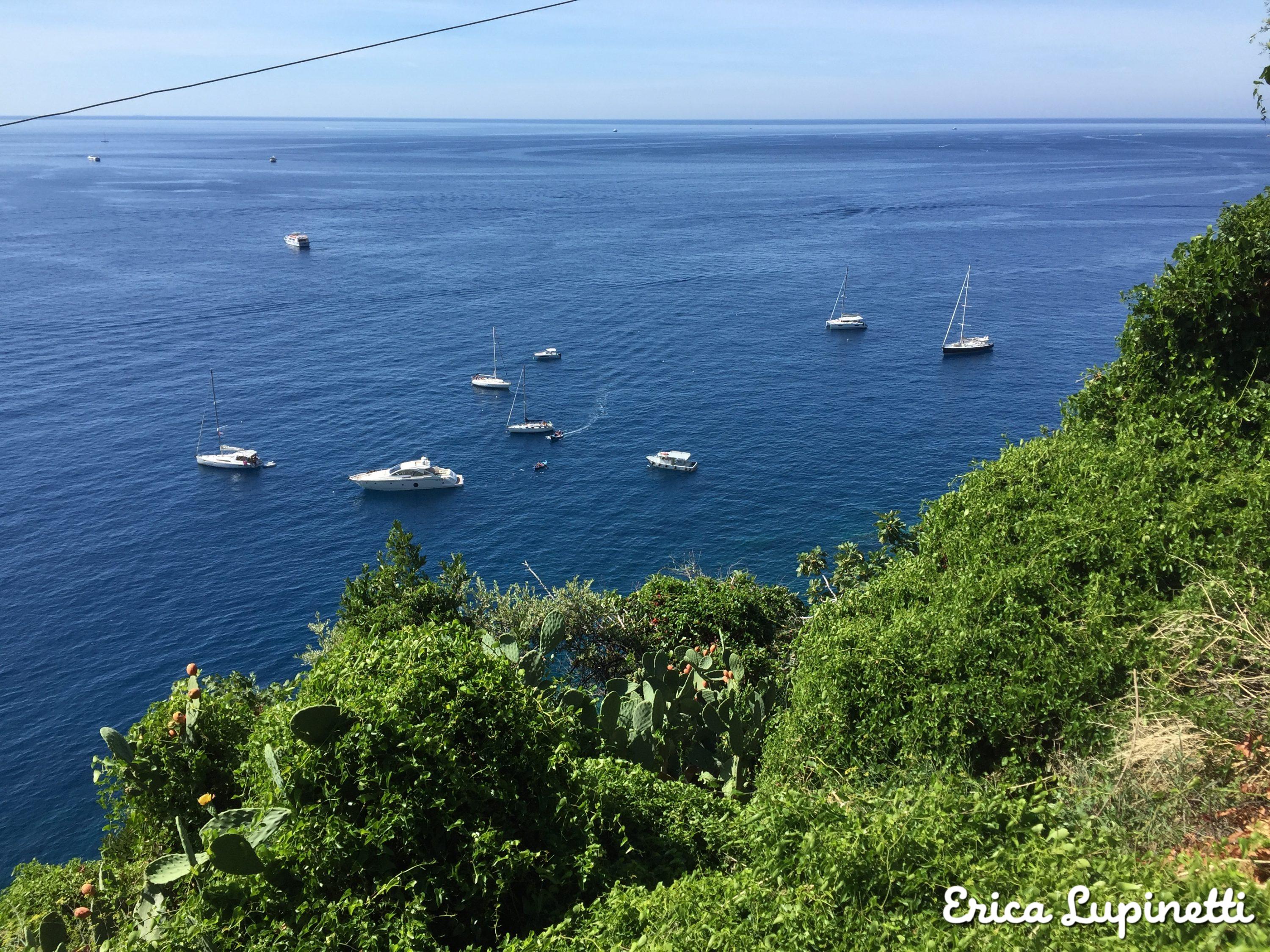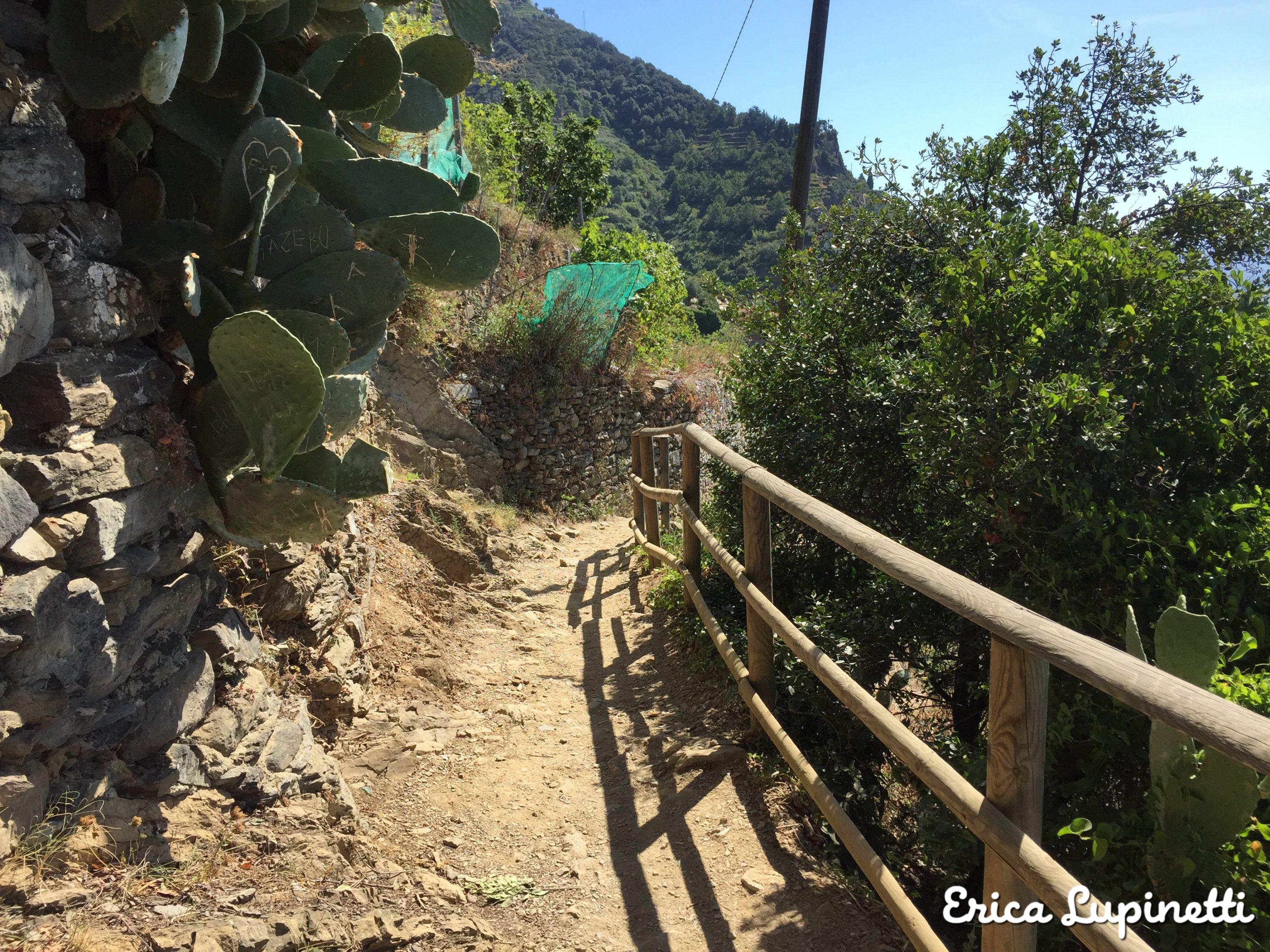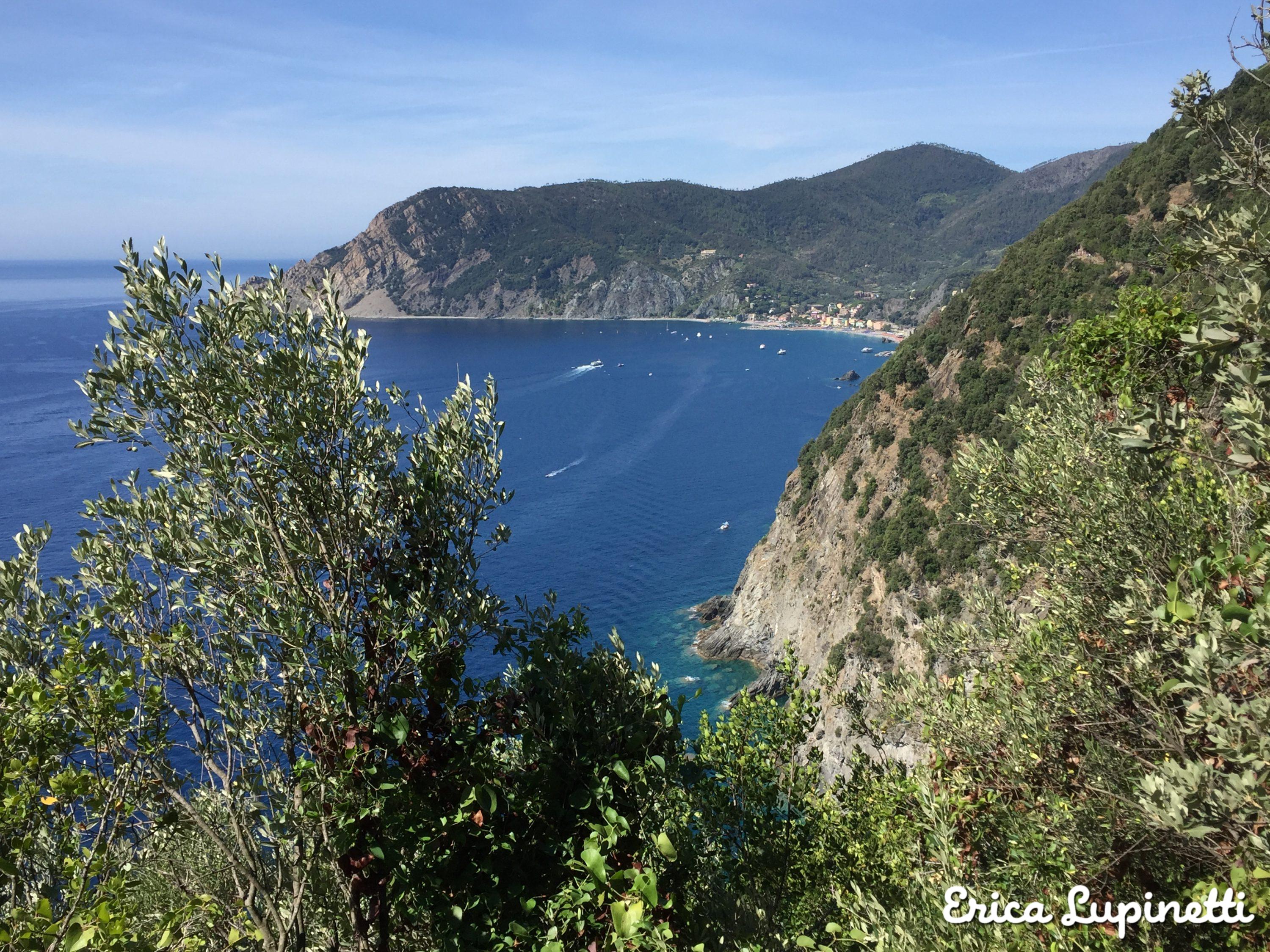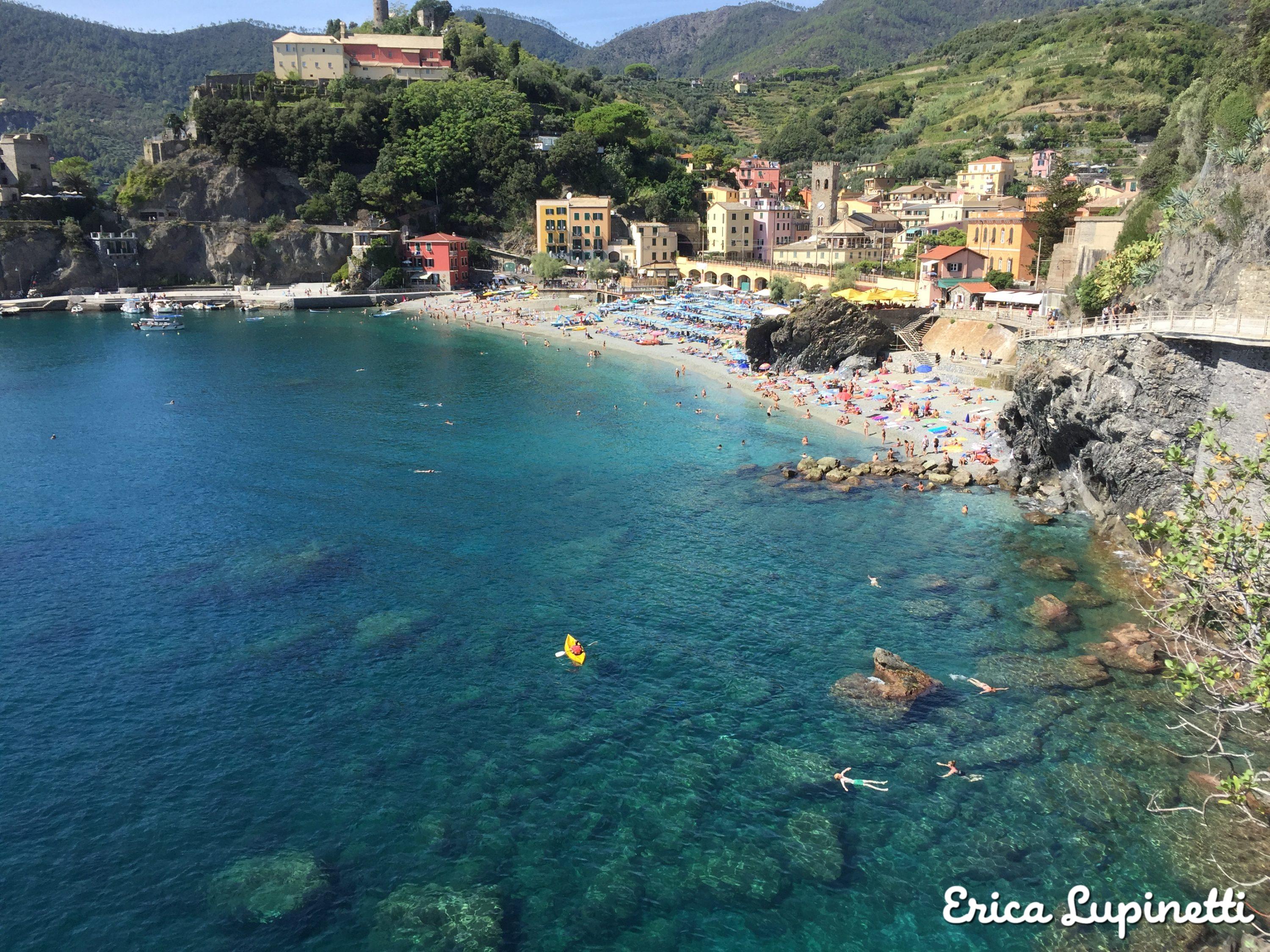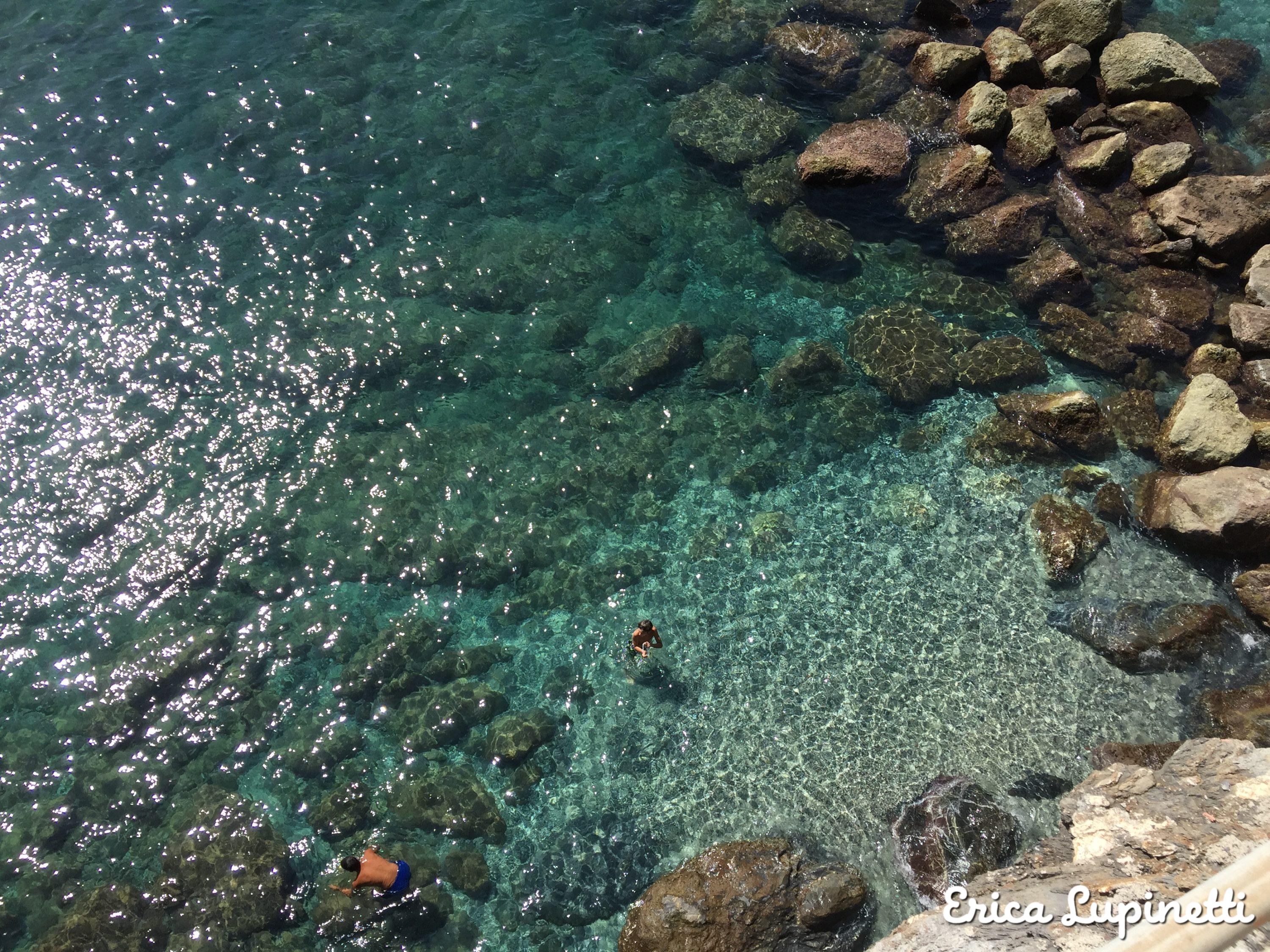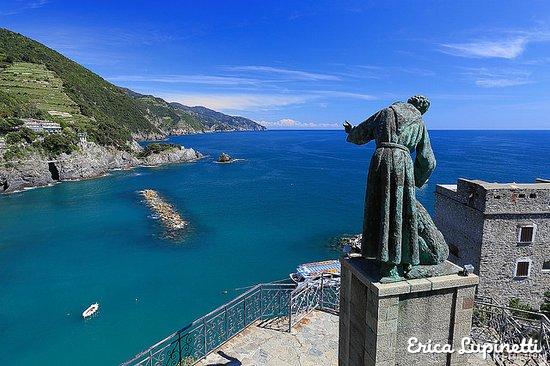Where nature and civilization perfectly coexist
The Cinque Terre has been part of the Unesco World Heritage since 1997 as a result of a perfectly mix of dramatic natural landscape respectfully exploited by mankind through cultivation and tourism. Although this is one of the smallest park National Parks of Italy, it attracts every year millions of travelers drawn by the typical Italian picturesque and colorful villages where traditions, the open welcoming spirit and local legendary gastronomy continue to charm all kind of visitors.
The Cinque Terre park is composed of five little fishing town:
- Riomaggiore: located just 5 minutes by train from La Spezia, this town features narrow and tall typical Ligurian buildings stacked up one to another, folowing each other down until the tiny rock carved harbor where wooden and colorful boats leave every morning for fishing. This village dates back to 8th century where the inhabitants of the Vara valley decided to settle on the coast below to plant vineyards and olive trees having better climate conditions. This village is the starting point of the Via dell’ Amore meaning, the “Path of Love”, (see this website to check the path details and trails’ status) leading to Manarola in 20 minutes of scenic walking.
- Manarola: this is one of the most picturesque villages of the park, it is all ups and down narrow alleys, little squares dotted with great seafood restaurants and bars, and incredible views over the sea or the hills covered with vineyards all around. Although this town doesn’t have a real beach you can swim in the deep crystal clean waters perfect for snorkelling and admire the village from another point of view. A little curiosity: the church’s bell was used as a warning to hide when pirates where approaching to raid the settlement.
- Corniglia: this is the quietest and less touristic village where you can properly sink in the laid-back local lifestyle far from the crowds. Probably the most under-valuated of the five “terre“, it is located 100 above sea level on a little promontory, it is actually one of my favourite ones being the most authentic one and the perfect location to have a proper Italian aperitivo enjoying breath-taking Mediterranean views or an epic homemade gelato!
- Vernazza: it is the most popular and photographed Cinque Terre’s village. This little fishing town offers breath-taking views on arrival whether it is by train, bby boat or by foot from one of the trails. It feature a lovely piazza with bars, seafood restaurants, a little sandy beach with transparent waters, lovely pastel coloured buildings, narrow alleys, cobblestones and a defensive fortress, called Belforte, build in the 16th century to protect the inhabitants from pirates. For the best views over the village visit the Tower of the Doria Castle overlooking the small port, once used to defend the village from pirates’ attacks.
- Monterosso al Mare: the biggest of the five villages, it offers striking beaches, outstanding natural views and all the facilities for all kind of holidays and fans of the “Dolce vita“. It is the only long sandy beach of the area and thanks to its rich reefs and fish variety attracts many tourists every year. Moreover, it is surrounded by lush Mediterranean flora such fig trees, lemon and olive trees, vines and it really looks like a postcard.

To access the “Blue trail” you will need a Cinque Terre pass, a sort of entry ticket costing 7.50€ per person allowing you to access the trails. You can take a multi-day ticket or buy a combined train ticket too. For all ticketing details check the detailed information on this useful website.
We decided to explore this amazing National Park staying in La Spezia, a cheap option far from the crowds, and on the first day we took the train to Riomaggiore to start our hiking adventure. Having only three days at disposal, our goal was to visit two villages per day moving from one place to another hiking, which is in my opinion the best way to enjoy spectacular natural views, the wonderful Mediterranean climate and completely unwind. We always took the train at the end of the day to return to La Spezia. Coming by cars is the worst option since parking is very limited and expensive and it is a true nightmare to queue waiting for a parking lot to get free. For more information about how to move around, check this page.
Let’s see together the highlights of the five villages and my favorite scenic hiking trails:
1. Riomaggiore
The seagulls flying, the little boat ramp,the fishermen watching the sea and monitoring the weather, the colorful portico and winding alleys…everything stayed exactly the same as 50 years ago in this ancient village. We spent a couple of hours going up and down the streets which during September where still very busy being harvesting time , one of the best moment to see the little vans transporting tons of grapes or people collecting the fruits through little mechanical trains going up and down the vineyards. There is also a little path going left at the harbor leading to a narrow bay where people can refresh themselves in the hottest days finding relief in the clear waters!
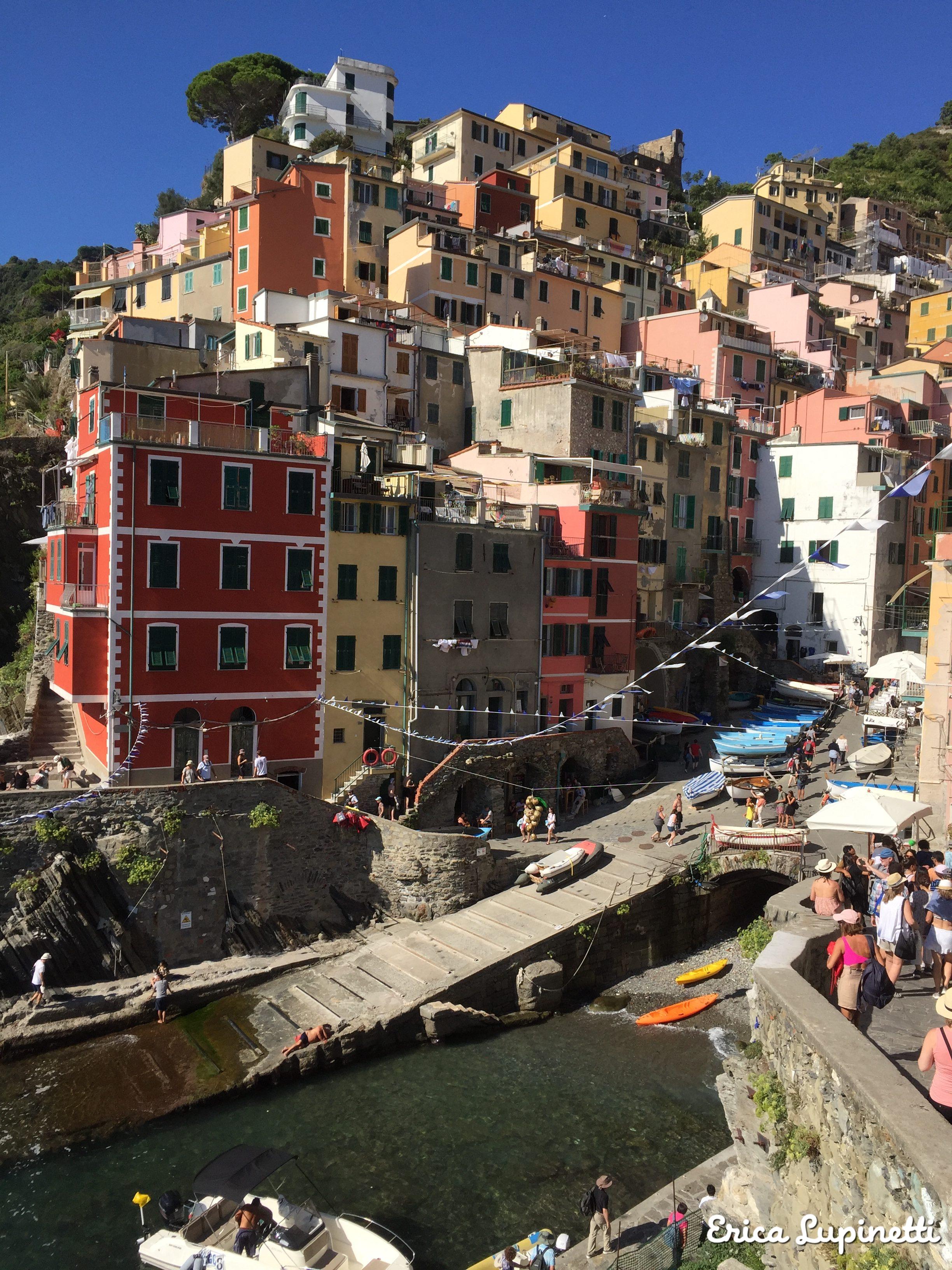
The main things to visit in this vertical village are:
- The Gothic Church of San Giovanni Battista
- The San Lorenzo Church built in 14th century
- The “Via dell’Amore“, the starting point of the “Blue Trail” so-named for the stunning sea views and romantic landscapes leading to Manarola all the way to Monterosso al Mare.
- The Riomaggiore Castle dating back to 13th century to enjoy breathtaking coastal views
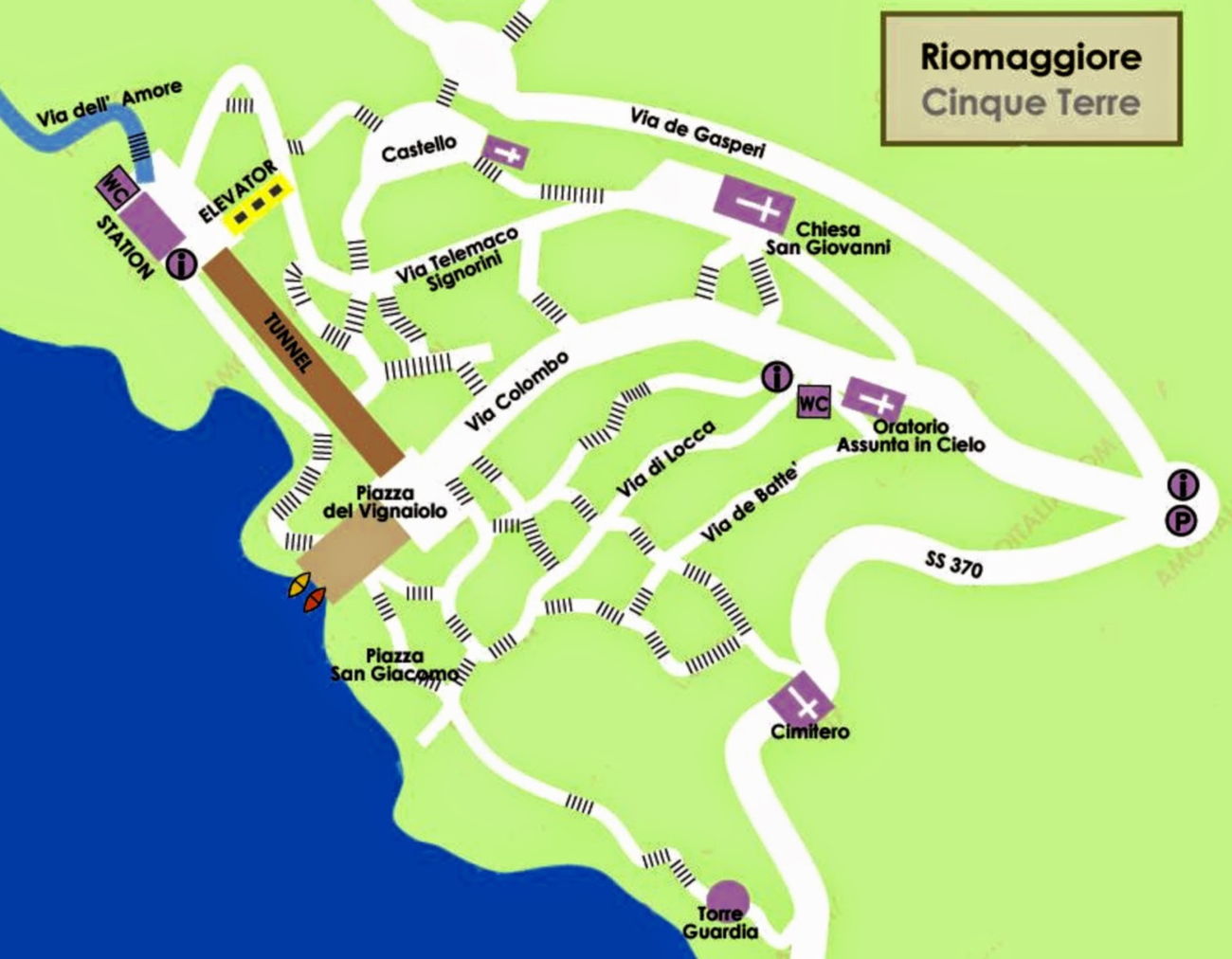
The Blue trail between Riomaggiore and Manarola is currently closed until 2021, so you can need take the train to reach Manarola. There is a longer trail passing through the hills, but due to a rock-slide it is unfortunately indeterminately closed too. Luckily, all five villages are well connected by rail, and you will easily catch regular trains every 20 minutes coming from La Spezia or Genova.
2. Manarola
Situated at only 500 meters from Riomaggiore, here are the main point of interests of this picture-perfect village:
- the 14th century Church of San Lorenzo, patron of the village. Every year on the 10th of August, the saint is celebrated through a suggestive procession and an amazing fireworks show.
- Take the Blue Trail going towards Corniglia to take the best aerial pictures of the village
- Visit the “Belvedere” square at the end of the main village street to enjoy lovely views over the harbor
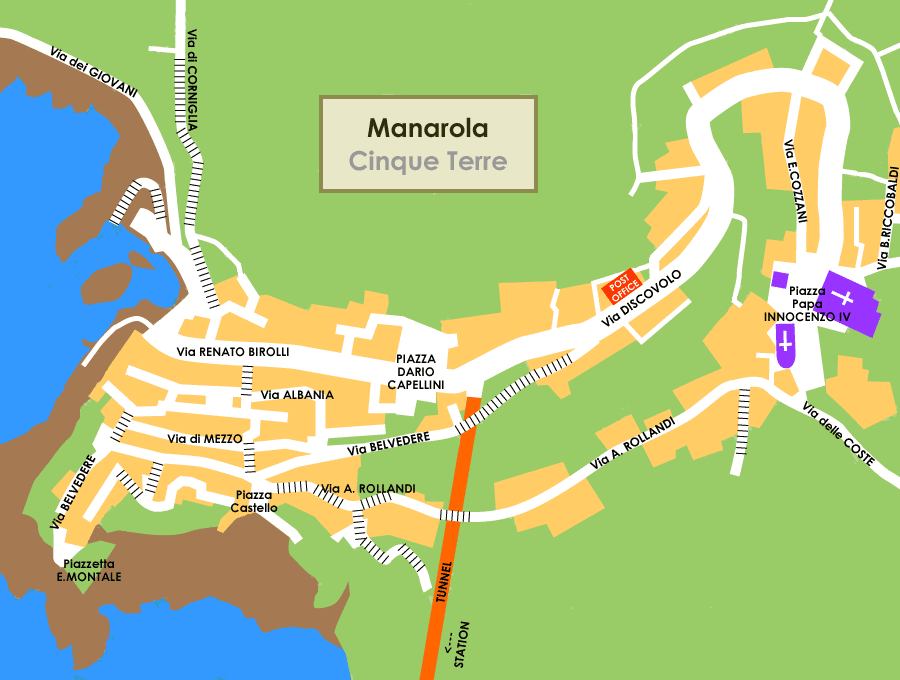
Hike Manarola – Volastra – Corniglia
We continued our expedition taking a bus to Volastra a little village in the hills just behind Manarola, characterized by olive trees, cultivated fields, and a peace. Here you can also quickly visit the Sanctuary of Santa Maria della Salute, a holy place of Roman origins dating back to 10th century. You can also hike here in a couple of hours taking the steep and strenuous “Way to Volastra” made of over 1200 steps.
We preferred the bus option to save some time, at least one hour, which left us at the top of the hill from where we took the red and white path leading to Corniglia. The mini bus 20 minutes journey it’s an experience itself: you will travel with the local elderly people chatting about the harvesting, old traditions, gossip or talking about their lives and habits before the bus line existence. We actually found out that everything was carried and transported through donkeys dragging goods and food up and down the vertical streets.
The path is almost 7 km long and it takes about 3h30 without stops from Manarola to Corniglia. It took us around 2h30 to get from Volastra to Corniglia taking 20 minutes to eat and rest in the woods, so I would consider it a moderate difficult path depending on whether you start from Manarola or not.
I remember this path to be one of the most scenic ones I have ever done and I would probably do it again I was coming back to this area for the freedom feeling that this walk conveys. Just remember to bring a hat and plenty of water since you will walk through emerald green vineyards with no shade whatsoever, and cultivated olive trees plots, while enjoying spectacular views over the whole coastline and blue sea: truly a dream!
3. Corniglia
The third “Terra” is my probably one of my favorite ones as We had the chance to try the local gastronomy at its best without rushing and far from loud tourist groups. Being Italian, trust if I tell you that you will taste one of the best home-made gelato of your life at Alberto Gelateria. This little place offers a great granita too and it has a cosy back courtyard where you can rest and enjoy your well-deserved cone in peace. The price was honest too, 3€ for two flavours. Don’t forget to try out the basil and lemon flavours: a fresh treat on a hot day!
After exploring a few alleys and discovered breathtaking panoramas we decided to end our day having a true Italian aperitivo at the “La Terza Terra Bar” featuring great couple deals (two glasses of wines and Italian tapas for 11€) and remarkable views over the sea: the perfect spot to watch the sunset and truly chill out!
Corniglia has no great architectural landmarks but it’s the most authentic village. We also found an amazing little pebbly beach going all the way down the stairs from the view point. From here it was possible to hire kayaks and thee were a few locals plunging into the turquoise waters or just sunbathing on the quay.
For those planning to reach Corniglia by train, bear in mind that a vertiginous and long flight of stairs is the price to pay to be able to reach the old town located at 100 above sea level. Legs shaking assured when taking it in both directions!
4. Vernazza
On our last day we decided to take the train from La Spezia all the way down to Vernazza to explore the fourth village and carrying on hiking until the end of the park.
This picture-perfect village has been listed has one of the most beautiful ones of Italy and features:
- Santa Margherita of Antiochia Church, the pale yellow building overlooking the little port, built on the rocks and dedicated to the patron of the town.
- The Tower of the Doria Castle, built in the 15th century to protect the village from invaders which offers the opportunity to take wonderful shots over the hills for only 1.50€.
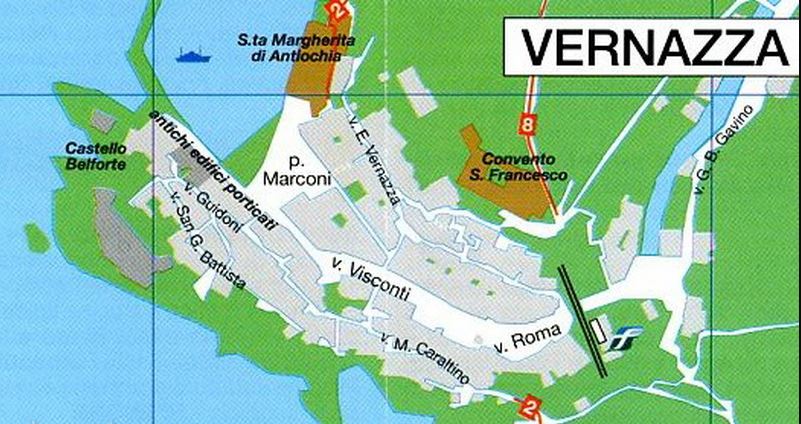
Vernazza to Monterosso hike
From here take the Blue Trail going towards Monterosso al Mare and take a look over the dazzling turquoise waters, you can see fishes and jellyfish from the top. Stroll in the gardens taken care by local volunteers and take probably the best shot of your whole holiday! This trails is only over 3Km long and in 1h30 you will get to your last “Terra”. An alternative moderate trail for hikers who have more time is to take the longer path which is just over 7Km long and in 3h30 will take you there. Both paths alternate sun and shade granting breathtaking views. The longer trail made us going through a woody green area, and we took steep footpaths which surprised us at every turn with unforgettable panoramas.
5. Monterosso al Mare
The view of the last and biggest town was the pay back for all our efforts and at the same time you wish the park would never end as it is truly a hiking and photography paradise. Monterosso is divided between the Old Town characterized by castle’s ruins, little alleys, colorful terraced houses and Fegina, the newest and rich part of the city where hotel, restaurants attracts million of tourists every year looking for the typical Italian getaway. The symbol of the city is the statue of The Giant representing Neptune part of a private villa’s terrace and towering over the lively and most recent area of Fegina.

Here are the main monuments of Monterosso:
• The Church of San Giovanni Battista, built in 1200, this Gothic-Genovese style church represents the heart of the Old Town and it is located in the main square.
• The San Francesco Church and Cnvent stars an impressive Statue of San Francesco of Assisi overlooking the sea on the “Colle dei Cappuccini”, the hill of Capucins and is home to some Van Dyck remarkable works.
• The Giant Statue, Il Gigante, representing Neptune, the god of the sea, embracing the vast sea.
- Via Fegina and Fegina Beach: this seafront promenade is populated by locals and tourists watching life going by sipping a glass of wine or eating an ice-cream. The beach gets very busy during high season as it is reachable by all sort of transports and has sandy seabed and feature clean transparent waters! We even managed to see a little octopus 3 meters away from the shore and other colorful fishes swimming along the reef!
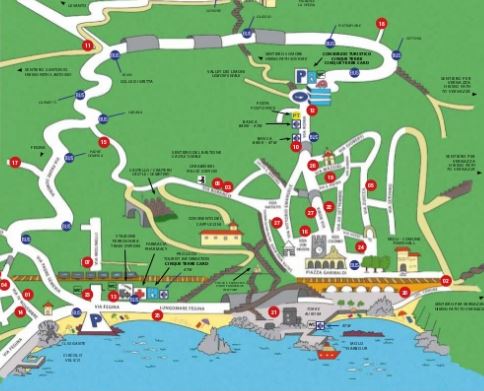
In the afternoon we stopped by the famous “Bar Pasticceria Laura” in Old City a bakery selling the typical home-made cake: the Monterossina, a short crusted three layered cake(there is a sponge cake version too) filled with custard cream, jam, chocolate cream. It was absolutely delicious and it was a huge caloric bomb. A real treat!
Accommodation and Restaurant tips

As previously mentioned, we decided to stay in La Spezia to avoid spending minimum 80€ per night in one of the Cinque Terre B&B and also because I booked this trip last minute. Another good option would be staying in Levanto, on the East side of the park, which is well served by the railways too. We arrived in La Spezia by car and we chose an accommodation not too far from the city center that offered us nice views over the hills: the only noise we heard in the morning were birds singing and neighbors chattering in the street. I feel like recommending this little and cute pink house called “La Bomboniera” for those who like the granny-style old houses where everything is old fashioned and pink! The only drawback it that you need a car to climb the steep the long street leading uphill and it is not super easy to find.

La Spezia isn’t a popular tourist destination being an industrial and commercial harbor town but it offers a surprising pleasant city center and inexpensive seafood restaurants and bars where you will find only locals and you will feel truly integrated. Here are my recommendations: La Pia Centenaria is a great discovery if you are looking for fresh ingredients, tasty pizza and cheap prices! It is the perfect option for a quick meal with friends and an unmissable occasion to try out local specialties and desserts at low cost prices! If you are looking for a nice restaurant for a couple or family dinner, then you should go to the Antica Osteria dell’Uva. It is a traditional restaurant with homemade fresh local ingredients which offers great tasty seafood, ravioli, antipasti at a honest price! We found out this place following the inebriating scent coming from the kitchen and we managed to find the last table in the street!Definitely a little gem to book in advance!



